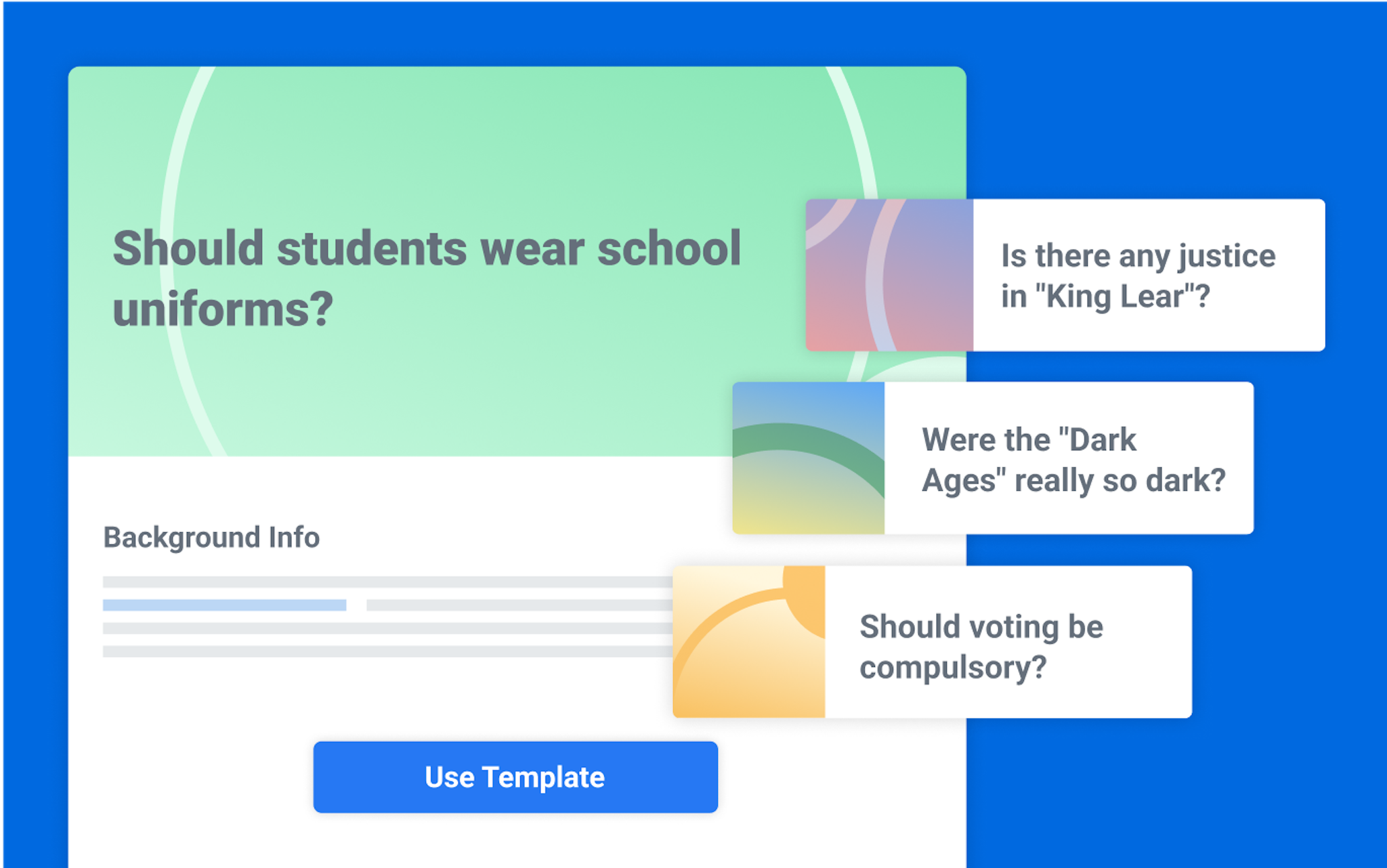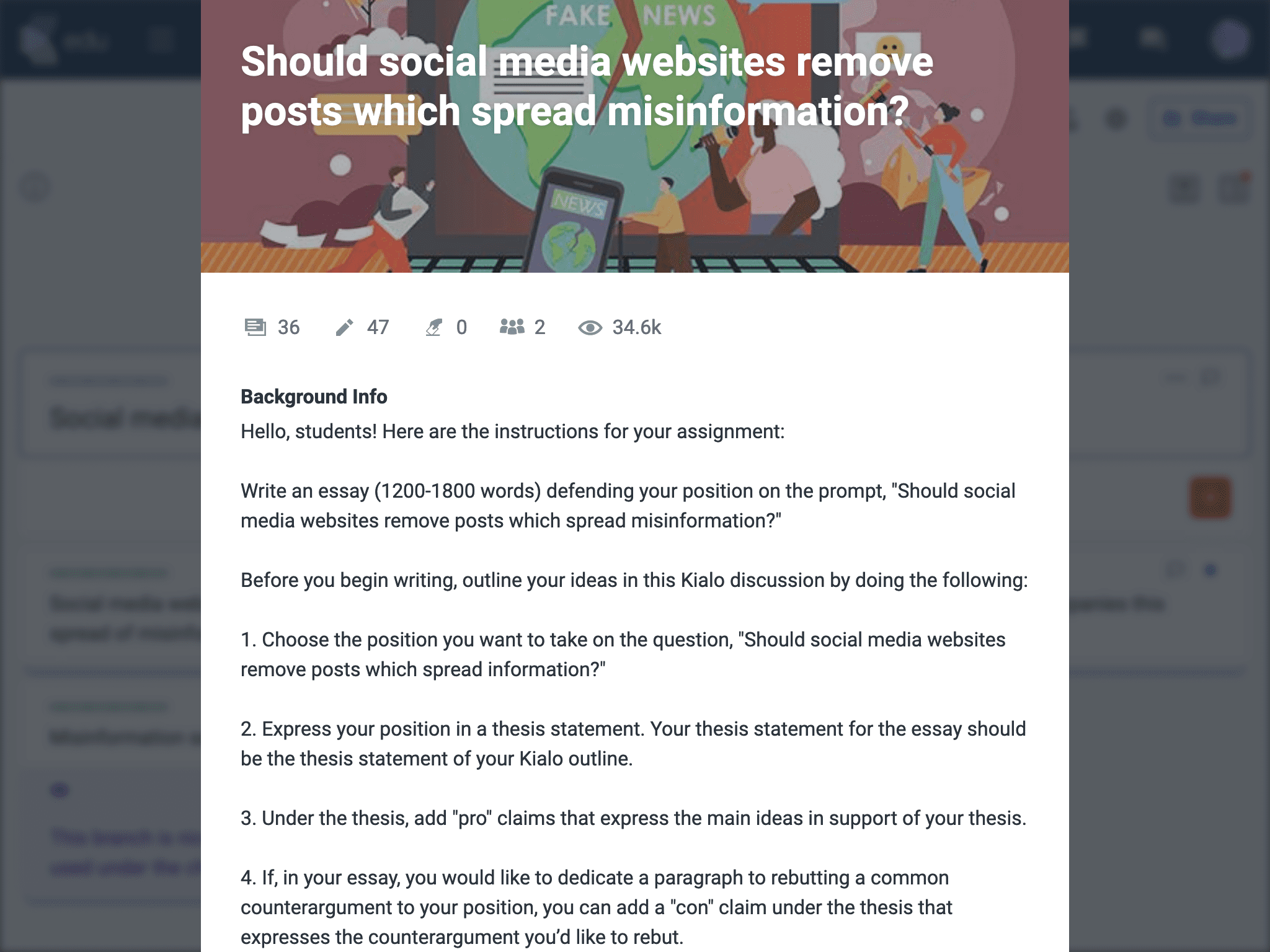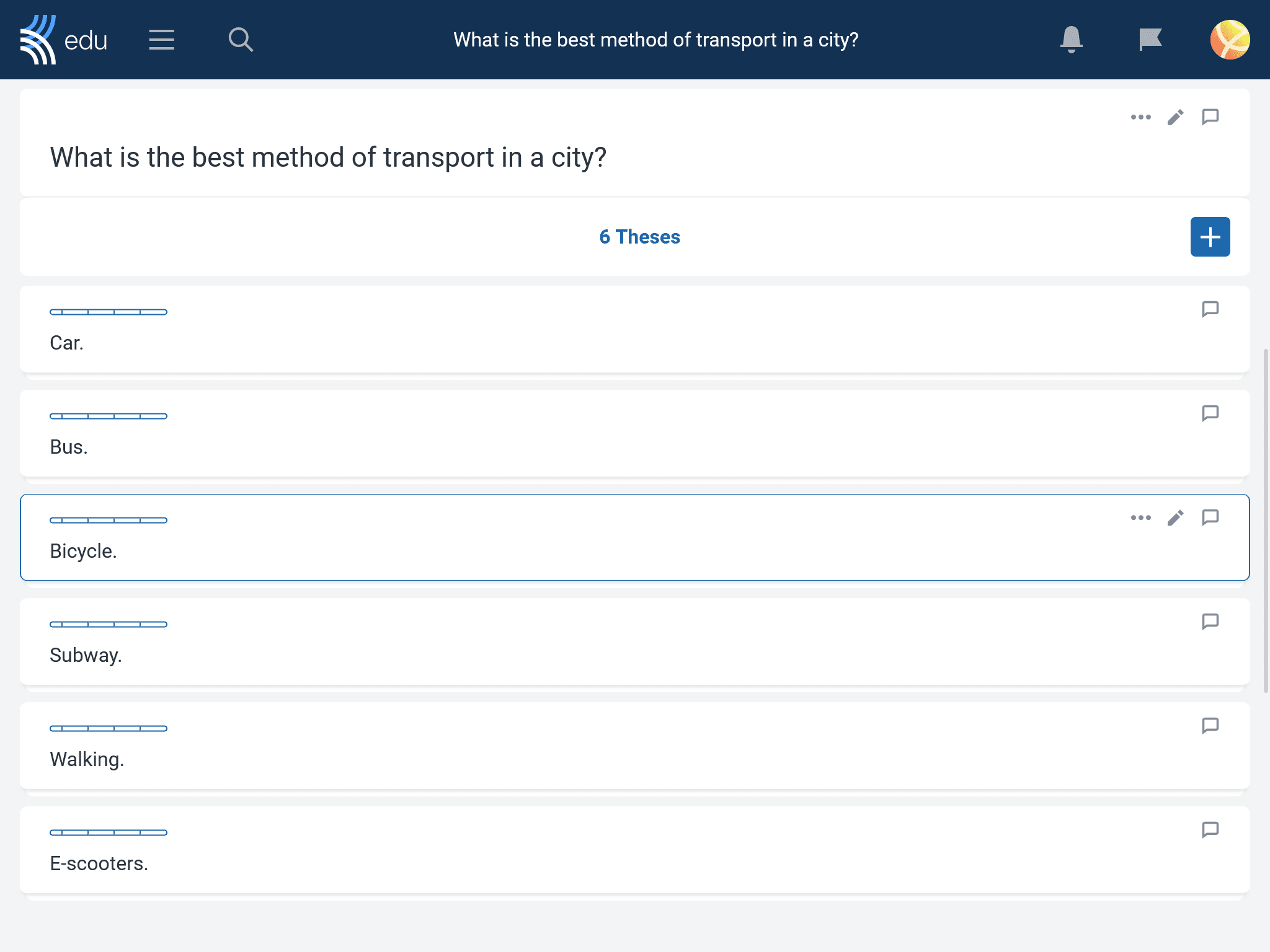We all like to think of ourselves as rational actors, but much of what we do is guided by habit, emotion, and cognitive biases that encourage us to take mental shortcuts. Thus, promoting rational thinking can improve students’ problem-solving skills, making them more capable learners across various subjects.
In this article, we will explore several broad techniques you can use to help students cultivate these abilities over time. You can employ many of these techniques in a Kialo Edu discussion (completely free) to activate student’s critical and rational thinking skills!
1. Welcome questions from students — no matter how big or small
It might be obvious, but encouraging and welcoming student questions is an essential step towards making them better, clearer thinkers. Rational thinkers are those that take the time to think about things from different angles and explore gaps in knowledge where they find them.
Impress upon students that there are no “stupid questions,” and create a space where it is safe for them to think aloud as they come up with new ideas or question existing ones.

Use tricky questions as an opportunity to find the answers together, either through discussion or research. While it’s not always possible to diverge from the lesson plan, student curiosity should be rewarded with time and attention as much as possible!
2. Focus on systematic problem-solving to train trial-and-error process
One of the key principles of rational thinking is that many problems can be solved through thinking, with enough time and effort. The inverse of this is the binary attitude that students either know or don’t know how to do something (until they are shown).
Prompt students to work things out on their own through trial and error before testing their conclusions against those of their classmates. Remind students that making errors is an important part of the learning process, as it provides a chance for them to learn from their mistakes.
If you want to try this out in your classroom, consider assigning a Kialo Edu discussion as an essay alternative. Students can use the comment section to help their classmates sharpen their arguments through multiple rounds of peer feedback.

Rather than assigning a grade yourself, tell students they can choose their own grade once they are happy with their work. Activities like this encourage students to actively seek out constructive criticism as a way of strengthening their own ideas.
3. Allow students to explore the range of potential solutions to a problem

Jonathan Baron, a notable philosopher on the subject of thinking, identifies “insufficient search” as a major obstacle to thinking effectively.1 He deems this as the failure to consider more than one possible approach or answer to a given problem.
To train students to think “outside of the box,” give them lots of opportunities to tackle complex topics for which there are no easy — or singularly correct — answers. Open-ended classroom discussions on social and philosophical problems, such as forgiveness or honesty, can stimulate this kind of thinking, which some studies have even linked to improvements across foundational skills like reading and math.
If you’re looking for ideas on where to start, Kialo Edu is designed to facilitate this type of wide-ranging discussion, with countless ideas in our library of debate topics to help spark inspiration.
Educators should also take steps to create a classroom culture where students can discuss their ideas freely and won’t feel personally attacked when those ideas are challenged. Emphasize that winning is not the goal of classroom debates, but rather learning something new together.
4. Talk about thinking with your students
For students to develop their rational faculties, they need to be aware of their own thinking. By being more aware, students can train themselves to recognize — and avoid — careless thinking. Reflective practices like learning journals prompt students to visualize how their understanding has progressed with practice and contribute to a growth mindset.
“Showing your work” is also universally applicable, whether students are tackling math problems or defending their position on an ethical question.
5. Practice what you teach by modeling rational thinking
It’s essential that educators model the kind of thinking practices they want students to develop. Be honest about the gaps in your knowledge when they come up, and be willing to change your mind when faced with new evidence. Students should learn that a sign of true intellectual strength is not having been right all along, but having the curiosity and perseverance to work towards the correct answer.
Here at Kialo Edu, we’re passionate about helping to build the next generation of accomplished rational thinkers. That’s why we designed our platform to encourage civil discourse, collaborative learning, and systematic thinking as students work together to build out the different aspects of a debate.
How do you teach your students to think rationally? If you have a technique that works, feel free to reach out and tell us about it on social media, or directly at feedback@kialo-edu.com.
Looking for more inspiration on how to teach critical thinking in your classroom? We’ve got lots of other resources!

